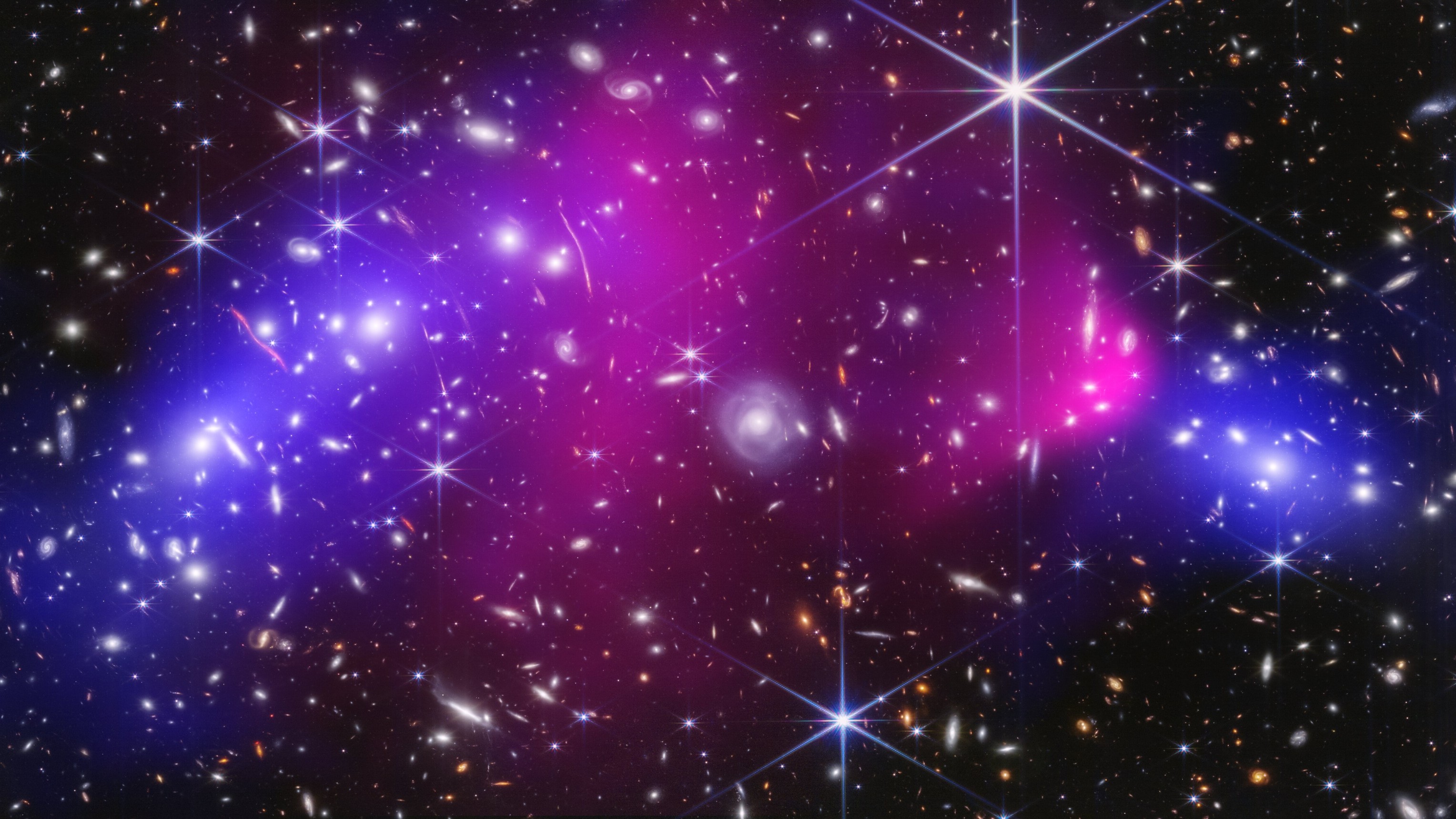What it is: The Bullet Cluster
Where it is: 3.7 billion light-years from Earth, in the constellation Carina
When it was shared: June 30, 2025
Why it’s so special: Galaxy clusters act as a magnifying lens, shining light on the faintest and most distant objects — a phenomenon known as gravitational lensing. On the rarest of occasions, galaxy clusters collide, creating an even more massive lens. The James Webb Space Telescope (JWST) recently provided extremely detailed observations of such a lens, the Bullet Cluster.
Located about 3.7 billion light-years from Earth in the constellation Carina, the Bullet Cluster is the aftermath of the collision between two galaxy clusters that is estimated to have begun approximately 150 million years ago. Each of the two galaxy clusters can be distinguished within the blue regions, yet they are bound by gravity and together form a single entity — the Bullet Cluster.
While gravitational lensing brings distant, faint objects into light, the extent of lensing can reveal the mass distribution within the massive foreground galaxy cluster. Mysterious dark matter makes up a huge chunk of galaxy clusters, but is difficult to spot because it does not reflect, absorb or emit light. So, astronomers sometimes study light from stars that are within the galaxy cluster but are not part of any galaxies. These stars are called intracluster stars and are floating because they are stripped from their galaxies during collisions. By analyzing the light from these stars, researchers can trace the distribution of dark matter, as these stars are gravitationally bound to the cluster’s dark matter.
Related: James Webb telescope discovers tentacled ‘jellyfish’ galaxy swimming through deep space
The latest data from JWST, combined with data from the Chandra X-ray Observatory, allowed astronomers to create an accurate map of mass — both visible and dark matter — within the Bullet Cluster. The light from intracluster stars pinned down the location of invisible matter, and the X-rays confirmed the location of hot gas. Based on these observations, astronomers could “replay” the collision. This revealed that hot gas (in bright pink) was pulled out of the galaxy clusters and left behind in the central region, while the dark matter (in blue) associated with individual galaxy clusters stayed intact and was not dragged away.
This stunning image, a composite of JWST’s near-infrared data and Chandra’s X-ray data, reveals clumps and stretched-out lines of mass that were previously unknown. These newfound structures could be signatures of a chaotic history, suggesting that the Bullet Cluster may have suffered several collisions over billions of years. The larger cluster, on the left side, might have undergone separate interactions before and after colliding with the smaller cluster on the right.
This brilliant image covers only a portion of the collision’s aftermath. In the future, the wide-area near-infrared images taken with NASA’s Nancy Grace Roman Space Telescope could provide a complete picture of the Bullet Cluster, both by unveiling spectacular photos and unraveling its mysteries.
For more sublime space images, check out our Space Photo of the Week archives.
